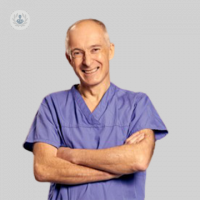Too hard to breathe: subglottic and tracheal stenosis
Autore:Breathing is life. Bringing people back from the brink or resuscitation starts with the airway and breathing. You can have three hearts and a hundred kidneys, but they’re no use if you can’t breathe. Professor Martin Anthony Birchall, renowned otolaryngologist, tells us more about subglottic and tracheal stenosis, a very rare condition that can prevent airflow to the lungs, making it hard to breathe.

We breathe through our voice box (larynx) and windpipe, and then down to our lungs. We all know people who have asthma and other lung problems, but these do not choke off airflow. Fortunately, closing down of the larynx and trachea (circular tightening, called stenosis) is really rare.
Unfortunately, it’s really rare. This means that people don’t know about it and doctors don’t diagnose it, often for years. If you see a bird in the garden (in Britain anyway) odds are it’s a sparrow or a pigeon, not a toucan. GPs, unavoidably, commonly diagnose and treat common things.
How then, can I know if I have airway stenosis?
There are some simple tests that can differentiate between asthma and airway stenosis: lung function tests that say that there is something wrong high up and not low down. When breathing isn’t responding to simple treatments, lung function tests (specifically something called a flow-volume loop) will tell you whether laryngeal or tracheal stenosis is a possibility and then patients can be referred to the right specialists.
What causes airway stenosis in adults?
Trauma
There are three main causes of airway stenosis in adults. The first is trauma: damage from the tubes used to ventilate people under anaesthesia, especially if they have to be inserted quickly in emergencies or if they have to be left in for a long time in an intensive care unit. Damage can also occur if there has been a breathing hole called a tracheostomy created in the neck. This condition usually responds to minimally invasive methods using endoscopes. Occasionally, treatment requires a short section of the windpipe to be removed. Mostly, these treatments are curative.
Idiopathic subglottic stenosis, with no known cause
The second condition is called “idiopathic subglottic stenosis” (ISGS). “Idiopathic” means that doctors don’t know what causes it. There are quite a lot of diseases like this, but doctors as a group are often reluctant to admit it. “Subglottic” means that part of the windpipe immediately below the vocal cords (another name for the cords is “glottis”, hence the name).
We now know that almost 100% of the time, idiopathic subglottic stenosis occurs in young or middle-aged women of northern European descent, so it must have a genetic origin, even if it does not seem to be passed down directly from mother to daughter. It sometimes starts to cause problems around the time of pregnancy or childbirth, but since these are women of child-bearing age this could just be a co-incidence.
ISGS is also reasonably straightforward to treat in most cases, but sadly tends to keep coming back around once a year or so for many years, sometimes until menopause, so there may be a hormonal component to it too. However, coming into hospital for a day-case endoscopy once a year is pretty tolerable for most women. Soon we may get to the real genetic-hormonal cause and develop a proper medical cure.
Rare diseases
Much more rarely, airway stenosis is due to rare diseases associated with inflammation of the airways. For that reason, even if it is thought that the cause is ISGS or trauma, tests need to be carried out to rule out other diseases. Some cases can be treated with steroids and other medication.
Adult subglottic and tracheal stenosis are manageable conditions in the hands of specialist airway surgeons (ENT or thoracic) who are continually working on ways to improve treatment. However, big gains would be made if all doctors were educated to look for the signs and do the tests. Many months and years of struggling with “failed asthma treatment” could be avoided.
If you’d like to know more about subglottic and tracheal stenosis, or you are having trouble with your breathing, get in touch with Professor Martin Anthony Birchall.


